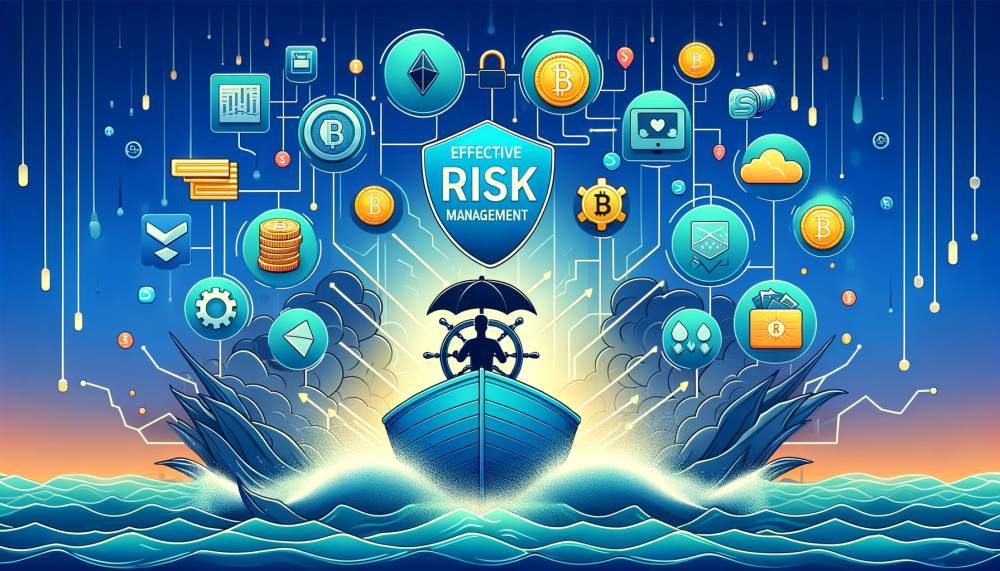Risk management is the foundation of successful crypto trading, essential for protecting your investments against the market’s inherent volatility. It involves identifying potential risks, assessing their impact, and implementing strategies to mitigate them effectively.
Common Risks in Crypto Trading
Understand the various risks involved in crypto trading, such as market risk, liquidity risk, and operational risk. For example, market risk can be managed through diversification, while operational risk requires secure practices to protect your assets from theft or fraud.
Building a Bulletproof Trading Plan
A robust trading plan includes risk management strategies tailored to your risk tolerance and trading goals. It should outline your entry and exit criteria, trading objectives, and specific risk mitigation techniques, such as stop-loss orders.

Understanding Market Volatility
Market volatility in crypto trading is influenced by factors such as news events, market sentiment, and global economic conditions. Traders can use tools like the Average True Range (ATR) indicator to measure volatility and adjust their strategies accordingly.
Strategies to Navigate Volatility
Adopt strategies like dollar-cost averaging to mitigate the impact of volatility. This involves regularly investing a fixed amount, regardless of the asset’s price, reducing the risk of market timing.
Emotional Resilience Against Market Swings
Maintaining emotional resilience is crucial in volatile markets. Techniques such as setting clear trading rules and maintaining a balanced portfolio can help manage emotional responses to market swings.

Legal and Regulatory Risks
Stay informed about the evolving regulatory landscape in various jurisdictions. For instance, understanding the implications of new regulations on your trading activities can help you remain compliant and avoid legal issues.
Impact of Regulatory Changes on Market Dynamics
Regulatory announcements can significantly impact market prices. By closely monitoring regulatory news, traders can anticipate market reactions and adjust their strategies to protect their investments.

Effective Risk Management Techniques
Implement stop-loss orders to limit potential losses and take-profit orders to secure profits. For example, setting a stop-loss order at 10% below the purchase price can help minimize losses if the market moves against your position.
The Importance of Portfolio Diversification
Diversify your portfolio across different assets, sectors, and geographies to spread risk. Holding a mix of cryptocurrencies, along with other asset classes like stocks and bonds, can reduce the impact of a poor performance by any single investment.
Leveraging Risk Assessment Tools
Utilize risk assessment tools like the Value at Risk (VaR) model to quantify the maximum potential loss over a specified time frame under normal market conditions. This can inform your decision-making and risk tolerance settings.

Advanced Risk Management Strategies
Consider hedging strategies such as using futures contracts to offset potential losses in your spot market positions. For instance, if you hold Bitcoin and anticipate a price drop, you could take a short position in Bitcoin futures as a hedge.
Risk Management in Margin and Leverage Trading
When engaging in margin and leverage trading, it’s vital to use leverage cautiously. Excessive leverage can amplify losses, so it’s important to implement strict risk management rules and regularly monitor open positions.
Psychological Aspects of Risk Management
Overcome psychological challenges by adhering to your trading plan and avoiding impulsive decisions based on fear or greed. Practicing discipline and maintaining a long-term perspective can help you stay focused on your trading goals.

FAQs
How Much Should I Risk on a Single Trade?
A general guideline is to risk only a small percentage of your total capital on a single trade, such as 1-2%. This helps ensure that a single loss won’t significantly impact your overall portfolio.
Can Risk Management Guarantee Profits?
While risk management is crucial for protecting your capital, it doesn’t guarantee profits. Its primary goal is to minimize losses and manage the risks associated with trading.
How Often Should I Review My Risk Management Strategies?
Regularly review and adjust your risk management strategies to reflect changes in the market, your trading performance, and your financial goals. A monthly or quarterly review can help ensure your strategies remain effective and aligned with your objectives.

Conclusion
Effective risk management is essential for navigating the crypto market’s uncertainties and securing long-term trading success. By implementing sound risk management practices, traders can protect their capital and position themselves for profitable opportunities.
The Continuous Journey of Learning
Risk management in crypto trading is an ongoing process of learning and adaptation. Continuously educating yourself on new risk management techniques and market developments can enhance your trading strategy and improve your ability to manage risks effectively.
Take Action
For further exploration of risk management strategies and tools, visit WiFiEntrepreneur.com/training-center. Engaging with these resources can deepen your understanding of risk management and its application in crypto trading.
Share Your Experience
Discussing your risk management strategies and experiences can provide valuable insights to the trading community. Share your stories in the comments section to foster a culture of learning and support among fellow traders.

